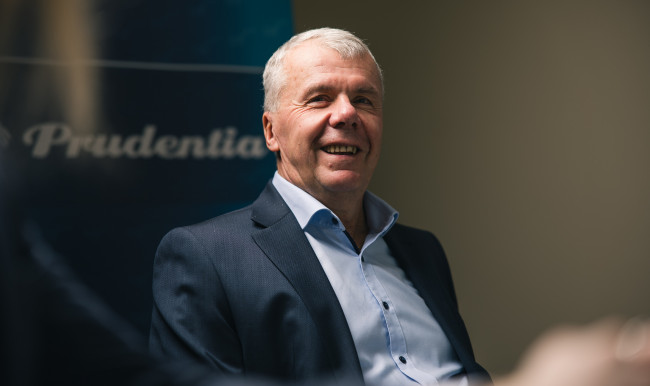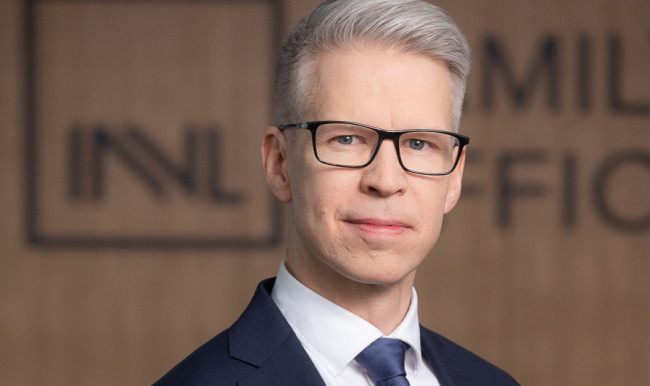From riches to rags or what happened to our rosy eyeglasses?
Kaarel Ots
Head of Nasdaq Baltic Exchanges
This summer I found myself watching a wonderful TV series WeCrashed starring Jared Leto and Anne Hathaway. This fascinating (and reportedly fact-based) story about the US company WeWork ends with the failure of the company's IPO in 2019. At that time WeWork estimated that it was worth USD 47 billion. Although the company was the largest commercial property tenant in New York, the founder, Adam Neumann, argued that WeWork was actually a tech company since he wanted to benefit from the rapidly growing value of Software as a Service or SaaS companies. He replaced the word “software” with “property” and WeWork became a tech company offering property as a service. WeWork eventually went public, but was valued down to USD 9 billion, and in October 2023 was worth only USD 100 million. However, in early November, the company filed for bankruptcy protection with the New York court.
For me, the WeWork story illustrates a long trend where “growth at all costs” outweighed profitability and investors' focus shifted from value to high growth. Such growth at all costs described mainly tech companies which, boosted by seemingly endless inflow of venture capital, kept increasing their value, and in the process helped to create an ecosystem for start-ups in many countries.
Reading this year's Top101 and TopTech value rankings compiled by Prudentia, I found myself wondering what would happen if we merged these two rankings together. Or, actually, not if but when. If I remember correctly, the separate ranking of tech companies was created to avoid comparing apples with oranges when one uses the same methodology. As a rule, start-ups grow very fast, often have no positive cash flow, and for funding their development raise a lot of money, also globally which explains why some start-ups have moved their head office out of Estonia. These companies may be global in scope and many of them are certainly worthy candidates for listing on a stock exchange.
I once heard at a conference speaker giving a great and extremely simple definition of a start-up: it is a company whose goal is to find a business model that can be escalated in unstable conditions and with limited resources. This “escalable” business model is probably the factor that separates start-ups from so-called conventional companies. It also explains why software is an important part of the services offered by start-ups as it allows them to conquer world markets with less effort than, for example, by making capital-intensive investments and by building factories.
The values of these companies are also determined somewhat differently: if the market value is literally created in the market, that is, on the stock exchange or if the company is sold, the value of a start-up that is financed by venture capitalists (VCs) is essentially a cross multiplication of the price level at which the last investor entered, regardless of where the company is in the rankings. In the 14th position in last year's TopTech, we find Eurora which raised a record 37 million euros last year and was valued at 159 million euros. The company recently filed for bankruptcy.
Ray Dalio wrote back in 2019 that the world has gone crazy and the system is broken: companies are selling dreams to investors and don't even have a roadmap on how to make a profit. By 2019, central banks had been printing money full steam for several years, interest rates were zero, and hedge fund money was moving to increasingly risky companies, whose value was booming both on the stock exchange and on paper. The world's largest index funds showed returns that made investors salivate, but investors quickly adapted to this "new normal.” Annual yields were 30 to 40% although average annual yield on the world's securities since the 19th century is just under 7%. Yes, there were people who had for years been warning about the bear market, but the overall sentiment was euphoria of getting rich by investing in growth companies, and the knowledge of macroeconomics and inflation was either thrown out or ignored.
At almost every economic conference held at that time, there was at least one speaker who said that this is not due from brilliant investments by investors, but rather due to inflation in asset prices (in addition to share prices, also real estate prices swelled). As far as I know, one of the goals why central banks started printing money was to avoid deflation and recession at all costs and, through the rise in asset prices, to create a public sense of increased wealth, which would help money flow into the economy and bring along an inflation rate of about 2%. How did this plan work?
Well, in a few years, 2020-2021, when the politicians declared war on the pandemic all brakes came off and both the European Central Bank and the Fed in the US printed more money than their entire balance sheet was a few years ago. At the same time, economic experts were telling us that this time everything is different and that printing trillions out of nothing will not lead to inflation. Inflation, however, had other plans.
In 2022, central banks in Europe discovered that for some unexplained reasons, inflation was raging, while Estonia remained on top of this ranking for quite a long time with a 20% rise in the cost of living. Of course, both at that time and now rampant inflation is not blamed on printing money, but on Putin, climate change, etc., but at least central banks jumped in and started to quickly raise interest rates as a solution. At the same time central bankers were assuring us that inflation can be kept in check. If that did not work, they said that inflation was of a temporary nature and will recede quickly. Today, interest rates have been raised to almost 5%, probably the fastest rise of interest rates in history. This has affected the economy, and together with the rise in energy prices acts as if someone had closed oxygen.
This can also be seen in market response – opinion leaders and experts explain in one voice that investors want to see companies' roadmaps to profit. This is understandable, because when discounting future cash flows for today, it is only enough to change the discount rate by a few percentage points in order to get completely different (i.e. smaller) company value. Another question, of course, is that if the party had continued, the music had played and the champagne had flowed, would we still be saying that it is wiser to focus on profit instead of growth? I doubt it.
I find that regardless of the industry or whether a company is listed on the stock exchange, there will be failures – the business plan just doesn't work. Inflation, energy prices, price of money that seems to have been created from thin air, more cautious investors – there are probably more reasons why the companies' results are still below forecasts. I don't think that this is something to be ashamed of. Older people (such as myself) still remember that Euribor has not always been zero, that it has not always been possible to raise millions only on a nice story, and that it has not always been self-evident that a new start-up estimates its value at millions of euros. At the same time, if I try to put myself in the shoes of a young and ambitious entrepreneur who was born in free Estonia and founded his or her business(es) in, for example, 2014-2015, you can fully understand how easy it can be to get used to an economic environment characterized by abundant capital, low interest rates and near-zero inflation.
It seems to me that the pendulum of emotions has swung rapidly to the other extreme – while for years we thought that in the company's euphoric growth cycle a beautiful narrative and growth at any cost were enough, today everybody is looking for profit. Regardless of the level interest rates do the (in)actions of politicians, life will also in the future be driven by the ambitious ideas and courage of entrepreneurial people. To get a share of the growth that often comes with it, there are mainly two options – either start your own business or invest in them. The earlier the development phase of the company you are investing in, the riskier the investment, but also the higher the potential return. For tips, tricks and, to use the modern lingo, roadmap, TOP101 and TopTech rankings are good references.



